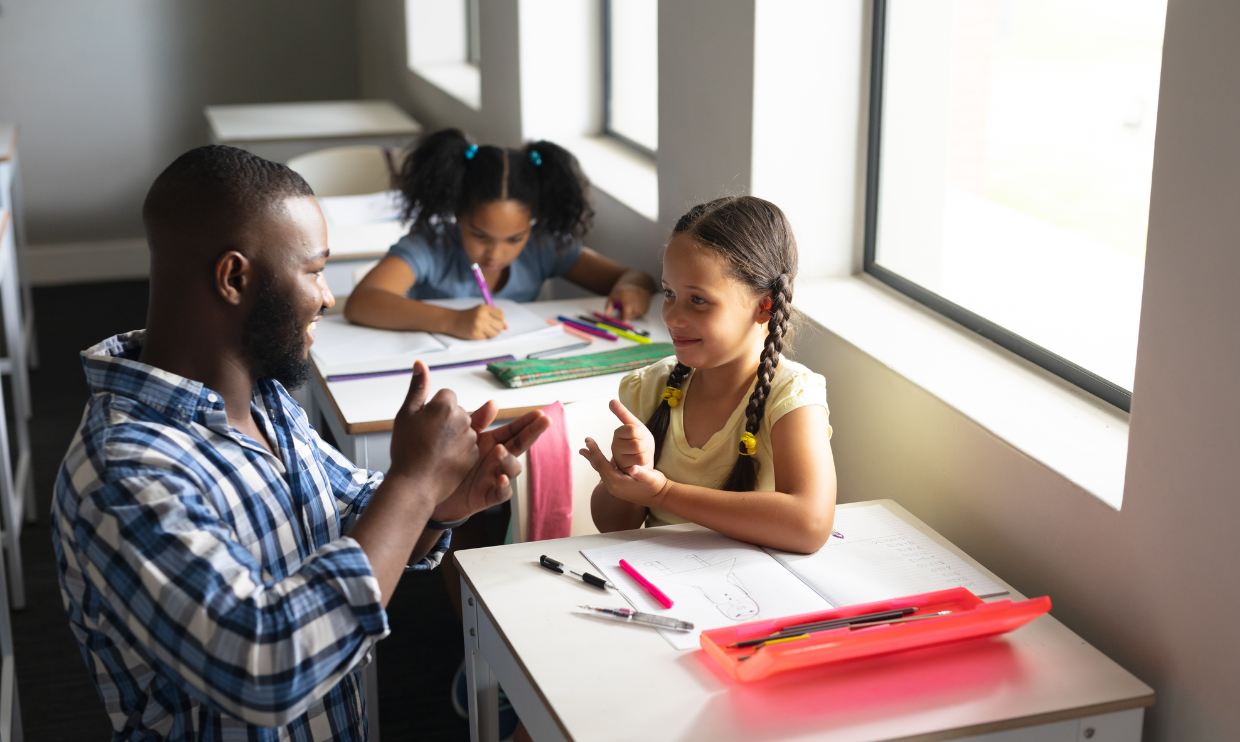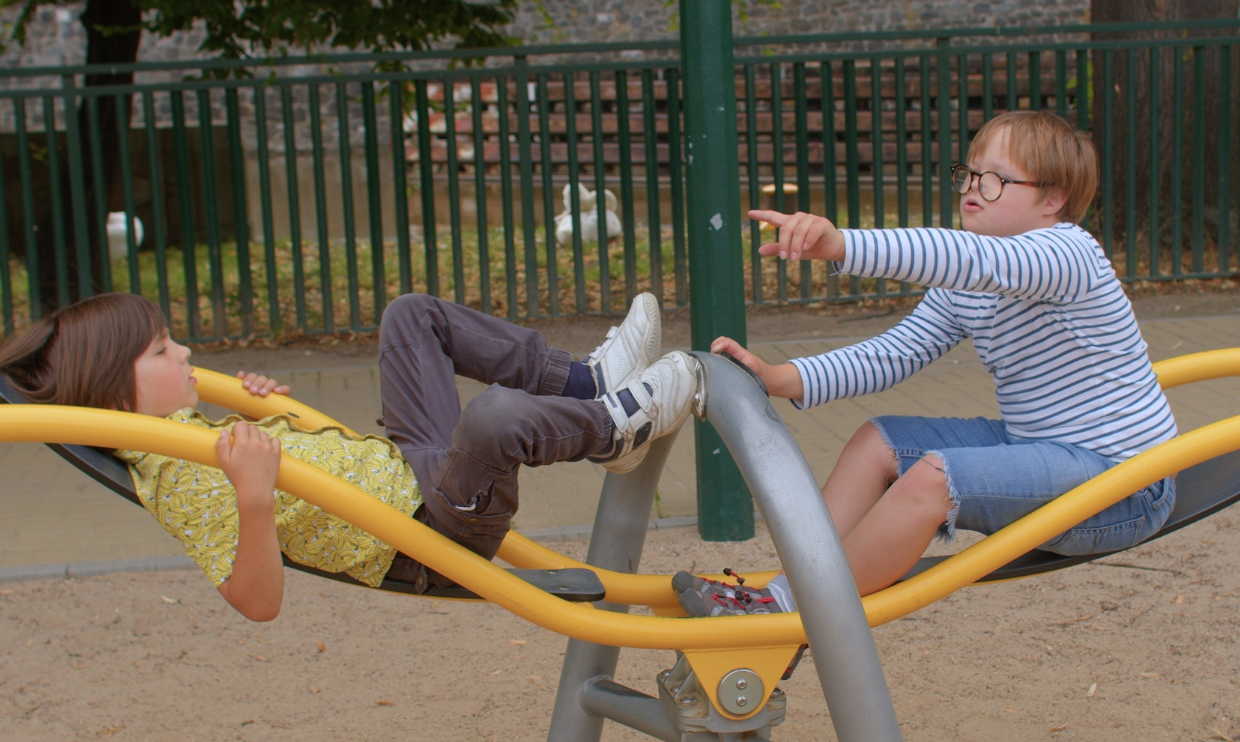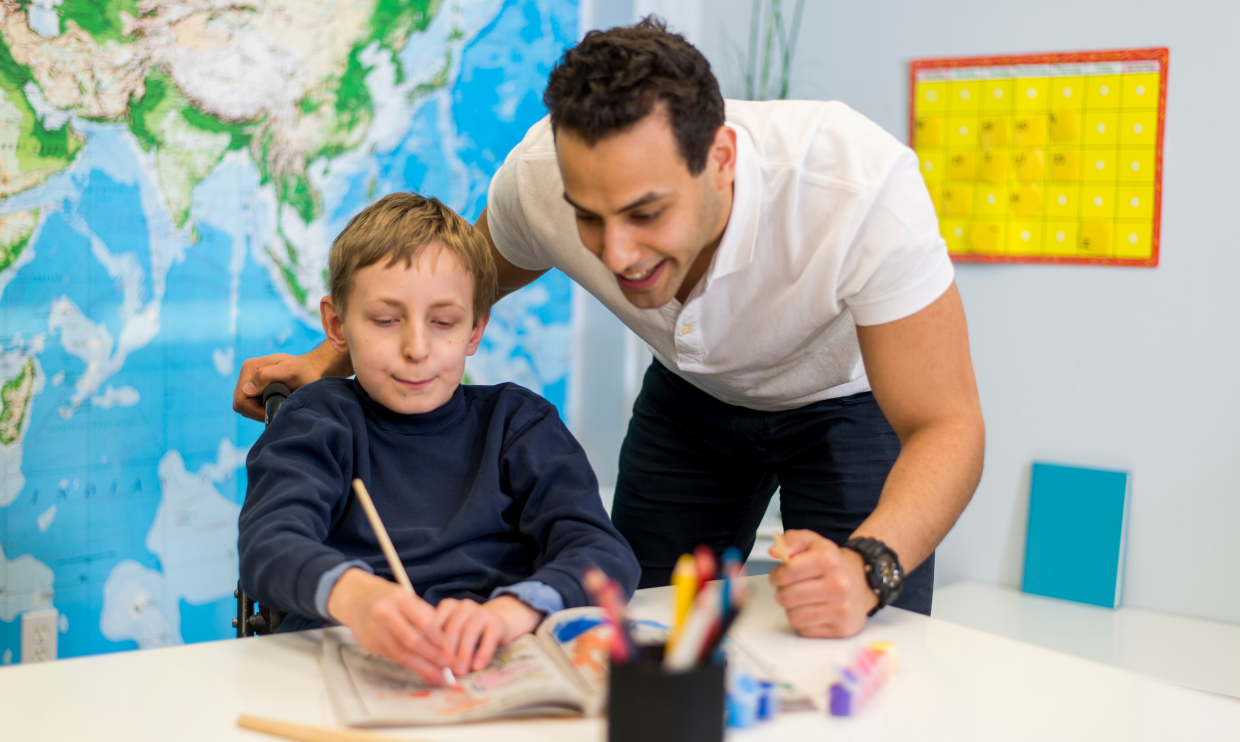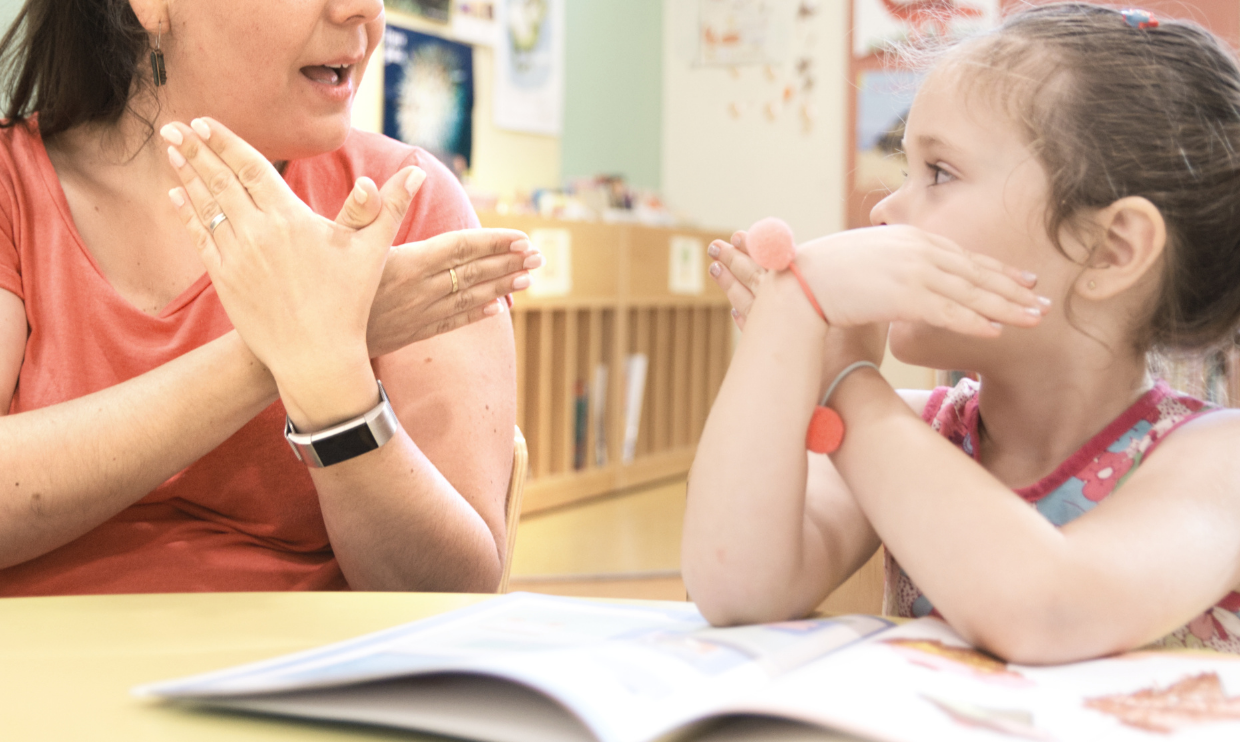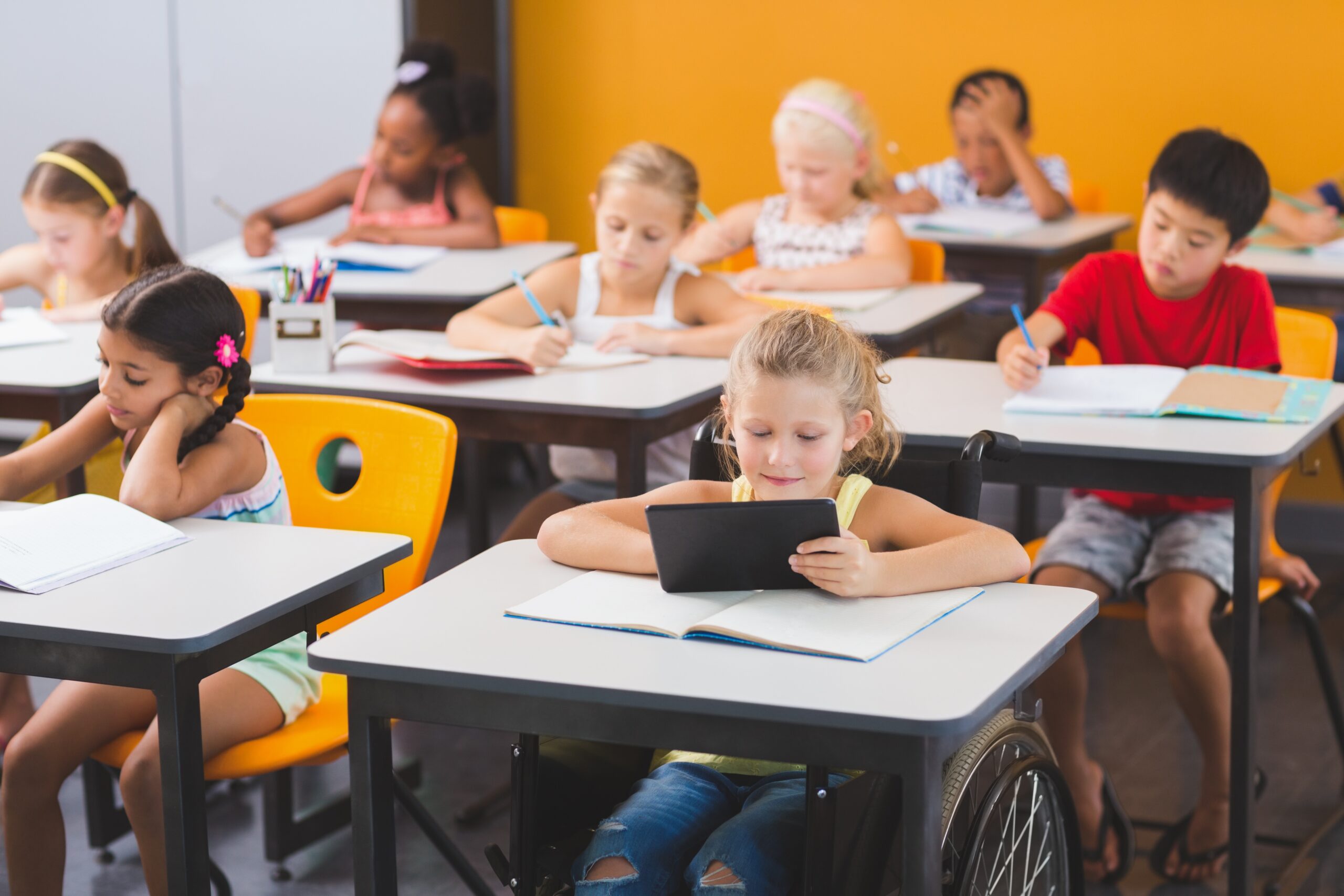
Many families raising kids with disabilities and learning differences seek a more inclusive educational placement for their child due to the potential academic and social benefits of participating in a general education classroom. Meanwhile, many other families want a more specialized environment that is focused on their child’s specific needs. No matter where your family falls on this continuum, know this: Students with varying needs should have access to different placement options at no cost to parents. If your school district doesn’t have an appropriate placement available for your child, they are required to find it. Here are 12 common types of IEP placements, via special education advocate Dr. Sarah Pelangka.
Gain access to Undivided’s comprehensive resources and receive our weekly newsletter.
1. General education class
A general education class is the least restrictive environment, and is always the starting point. Your school district must attempt to make general education work with supplementary services and supports before moving to a more restrictive option.
2. General education class with accommodations and modifications
It’s possible for a student to be in a general education class with a modified curriculum. In this case, Dr. Pelangka often recommends that the student has a formal inclusion specialist (a credentialed special education teacher) to support the general education teacher, in order to ensure that the student has the modifications and accommodations they need to be successful.
3. Co-taught classrooms
More schools are adopting the model of co-taught classes. In this model, a special education teacher and general education teacher work together in the same classroom for the full day. These classes include students with and without IEPs.
4. Resource pull-out/push-in services
In this placement option services occur in or out of the general classroom. In a “pull-out” model, a student can be pulled out to work in a small group setting with a credentialed special education teacher in a separate room. The resource teacher is not instructing a class; instead, they are working exclusively on IEP goals either 1:1 with the student or in a small group of peers. In a “push-in” model, the resource teacher comes into the student’s general education class to provide IEP goal support.
5. Special Day Class (SDC): Mild, moderate, severe
Specific to California, a Special Day Class* (SDC) includes options based on level of need. A mild–moderate SDC uses the general education curriculum and may also include intervention curriculum. These smaller classes are taught by a credentialed special education teacher, ideally targeting grade-level curriculum at a slower pace. Children can also be “mainstreamed” to general education environments at the same school, such as art or physical education.
A moderate–severe SDC uses a modified curriculum, often called “Life Skills” or “Functional Skills.” If a student remains in this setting until high school, they are unlikely to earn a diploma, even though they have the ability to do so through the new alternative pathway to a diploma. Being in this placement up until high school can put the student so far behind that they likely will not have access to a general education curriculum.
*Every district is different and names for these classes may differ. It’s important for parents to understand which class is being discussed for their child.
6. Autism Special Day Class (SDC)
As a result of an increase in students with autism, many districts now have autism-specific classrooms in which the special education teacher is also certified to support students with autism. Although legally districts cannot say that only students with autism can be included in this class, the strategies used within these classrooms should be evidence-based to support the autism population.
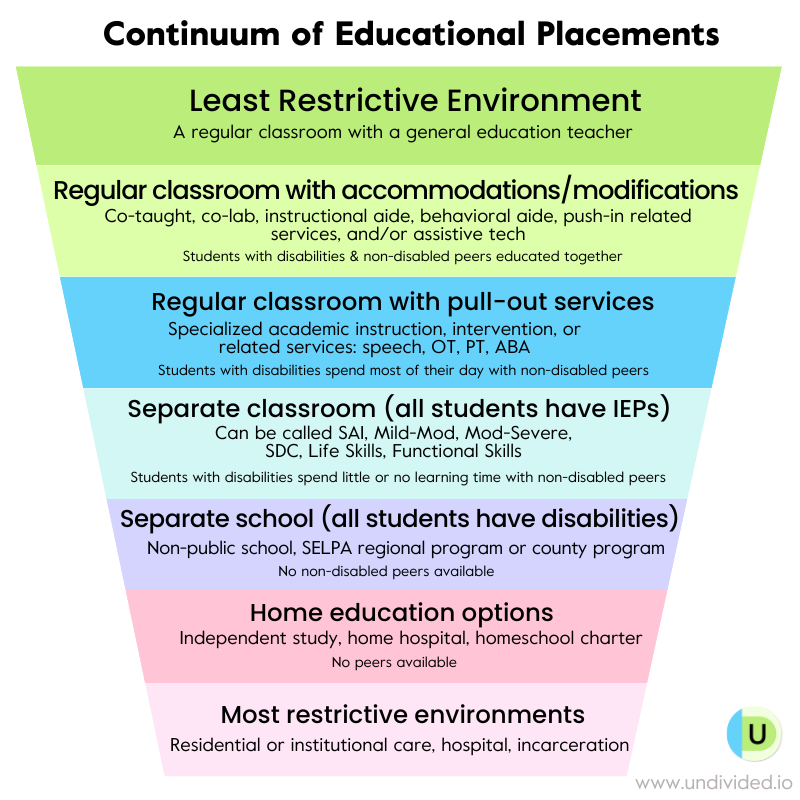
7. Emotional Disability Classes
Districts have programs specific to students with emotional disturbance eligibility. These programs support behavior and social-emotional wellbeing and development, and generally have ready access to a therapist. Students are generally on a general education curriculum.
8. Deaf, hard of hearing, blind, and visually impaired classes
Districts may have classes specific for students with hearing and visual impairments. If they do not offer programs within their district, they may look to the neighboring district, a SELPA (Special Education Local Plan Area) program, or a county placement. They also may hire an itinerant teacher to provide curricular support and/or related services (e.g., sign language, room acoustics, Braille, etc.).
9. County classroom or regional program
If a district does not have the capability to meet a student’s needs, they may offer the option of a county class, which is considered more restrictive than a district SDC class. In California these programs may be offered by SELPA as a Regional Program or by the County Office of Education. County programs offer daily on-site specialists (such as SLPs, PTs, OTs, behaviorists), allowing more immediate access to services. These classes are smaller and may or may not be on a modified curriculum (ED programs may have a general ed curriculum).
10. Non-public school (NPS)
Non-public schools are separate schools for students with various disabilities. There are no general education students on campus. All specialists are in-house and readily available to support students. Some non-public schools accept students on a private-pay basis and some accept district funding through the IEP process, or a mixture of both.
11. Home/hospital instruction
Students with disabilities that impact their ability to attend any type of school can receive home instruction. Home-based service providers collaborate with multiple service providers to develop a plan for instruction, and offer flexible scheduling options for when services take place. For example, students who have frequent doctor appointments can receive their services one, two, or more days per week during specific hours that don’t interfere with their appointments.
12. Residential placement
A residential placement is the most restrictive option in which the student lives at a residential facility where they access their schooling.
If you’re considering a less restrictive educational placement but are unsure of what kinds of accommodations and modifications are possible, check out this list of accommodations for IEPs and 504s. We also recommend you download our free IEP prep packet, which will help you prepare for your next IEP meeting and advocate for your child with confidence.
Gain access to Undivided’s comprehensive resources and receive our weekly newsletter.
Join the Undivided Community to get more resources like this in your inbox
100% free | Curated for you

A Navigator is your Partner at each turn
*Currently offering Navigator Kickstarts to residents of California


